
CLPS 0500 Perception and Mind, John Marks Guest Lectures Further Reading, etc. (5)
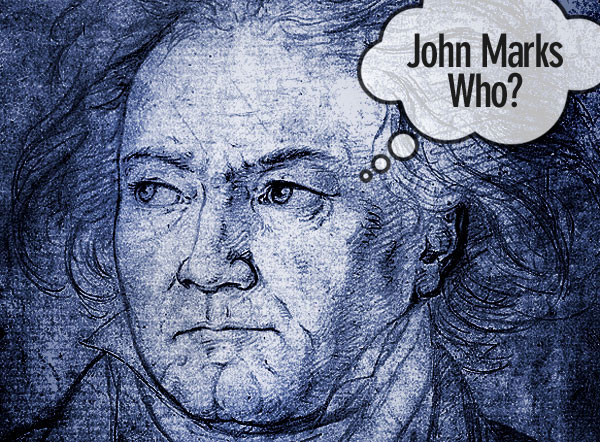 Courtesy Stereophile magazine.
Courtesy Stereophile magazine.
If anyone is interested, here are more groovy things to explore. Feel free to consider this your Suggested Voluntary Summer Reading and Listening List.
In 1965, the Soviet composers Dmitri Shostakovich and Rodion Shchedrin were both vacationing in Armenia. Shostakovich asked Shchedrin the Desert Island Score question: Were Shchedrin to be exiled to a deserted island and could bring only one score with him, which would it be? Shchedrin’s answer was prompt: J.S. Bach’s Die Kunst der Fuge (The Art of the Fugue).
When Shchedrin then turned the question on him, Shostakovich answered, “Das Lied von der Erde, by Mahler.” (Tr.: The Song of the Earth.) Which is not surprising, given that Shostakovich was a founding member (one of two, if I recall correctly) of the Gustav Mahler Society of the Soviet Union, and that Shostakovich later entertained (but decided against) the idea of completing the orchestration of Mahler’s unfinished Symphony 10. (BTW, the only books in Mahler’s composing hut were Johann Nikolaus Forkel’s major survey of Bach’s works.)
The same topic arose in another conversation that took place between Shostakovich and Shchedrin in 1975, two months before Shostakovich died (so I assume that they were in Moscow). Shchedrin asked, “Do you remember our conversation in Armenia? Did you change your opinion about Mahler?” “No,” Shostakovich replied. “And did you change your opinion about Bach?” To which Shchedrin answered, “No.”
I think that it is worthwhile to gain exposure to both these works, but I also must caution you that while The Art of the Fugue is rather accessible (for a work of its gravity), Mahler’s symphonic song cycle Das Lied von der Erde (the title is almost always rendered in German) is a tough nut to crack. But the same can be said for James Joyce’s Ulysses, and Pynchon’s Gravity’s Rainbow.
[Cultural-Literacy Sidebar: As a youngster, James Joyce was a student of the same voice teacher as future Count John McCormack, a legendary opera singer of the early years of the 20th century. Furthermore, McCormack encouraged his younger colleague. They entered the Irish national singing competition Feis Ceoil in two successive years, 1903 and 1904. McCormack took the Gold Medal in 1903. Joyce took the Bronze Medal in 1904, but reputedly only because he blew off the mandatory sight-singing requirement. The story goes that, but for that, Joyce would have won the Gold Medal as well.]
The Art of the Fugue is an exploration of the musical form of the fugue, which is merely one tune chasing evolved clones of itself. The entrances of the cloned tunes are staggered in time (and usually alternate between higher and lower starting pitches.) Kind of like “Row, Row, Row, Your Boat” on an energy drink. I have previously recommended on this blog a performance by the Emerson String Quartet of an arrangement of The Art of the Fugue for string quartet. (Sound samples at the link.)
That said, I think that the most accessible string quartets are the sole efforts in that genre by both Ravel and Debussy—try them, you will like them. In 2014, I gave the Quatuor Ebène a Stereophile magazine R2D4 award for their recording:
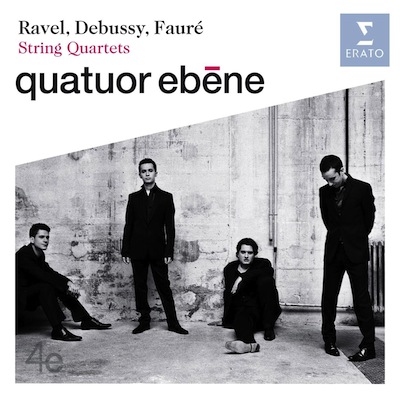
RAVEL, DEBUSSY, FAURÉ: STRING QUARTETS. Claude Debussy, String Quartet in g, op. 10; Gabriel Fauré, String Quartet in e, op. 121; Maurice Ravel, String Quartet in F.
Quatuor Ebène (Pierre Colombet, Gabriel Le Magadure, violin; Mathieu Herzog, viola; Raphaël Merlin, cello).
Virgin Classics CD 50999 519045 2 4 (2008). Etienne Collard, producer; Michel Pierre, Victor Laugier, engineers. DDD. TT: 80:24
The string quartets of Ravel and Debussy are the Cav and Pag of the chamber-music world—one is seldom seen without the other (at least on record). They are tremendously if not uniquely accessible (in places, actually jazzy)—so if you want to get your feet wet in string quartets, “Rav” and “Deb” are the way to go. Unlike many “accessible” works that lose their charm on repeated hearings (Ravel’s own “Boléro” comes to mind), the string quartets of Ravel and Debussy have real staying power, and have always been very well served on recordings. Into this crowded marketplace leaps Quatuor Ebène. This is not “teacup with lifted pinkie” string-quartet playing. Recorded in a magnificent century-old former granary in Limousin, this is a close-in, ultra-vivid document of intense performances that turn on dix centimes from propulsive rhythms to stock-still harmonies that hang in mid-air. Yes, you can hear the players breathing, but that is because they are blowing the dust off these pieces. The bonus Fauré quartet pushes the total time past 80 minutes, making this offering competitive with even budget reissues.
From the Quatuor Ebène recording, here’s the beginning of the pizzacato (meaning plucked like a guitar) -scherzo movement from the Ravel quartet:
09 Ravel Quatuor – II Assez vif – Très rhythmé (excerpt)
If anyone wants to go deeper, years ago I lectured on the continuing significance of the string-quartet genre, when I was a Visiting Lecturer at Thomas More College in New Hampshire. I usually lectured from notes or from memory, but when the lecture involved a lot of music theory and/or had to cover a lot of ground, I would write them out, mostly to check the running time. If anyone is interested in getting a copy of that lecture script, you can email me or leave a comment.
Das Lied von der Erde is a sprawling masterpiece for orchestra and two singers, who take turns singing Chinese poetry that has been translated into German. The poetry deals with themes of life, transience, longing, and loss. The goings-on are not entirely somber; there are comic interludes, and getting drunk is a theme also, viz.,”Das Trinklied vom Jammer der Erde” (“The Drinking Song of the Earth’s Sorrow”). Here’s a famous excerpt from the text:
See down there! In the moonlight, on the graves
squats a wild ghostly shape;
an ape it is! Hear you his howl go out
in the sweet fragrance of life.
Now! Drink the wine! Now it is time comrades.
Drain your golden goblets to the last.
Dark is life, dark is death!
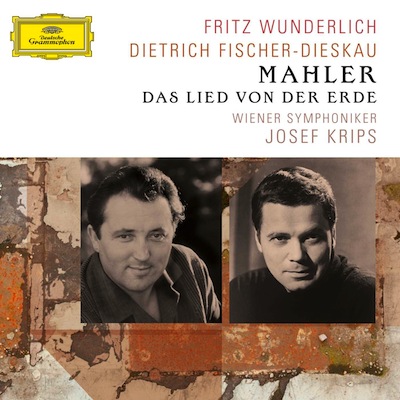
My favorite recording is a live recording from a summer festival in 1964, featuring singers Fritz Wunderlich and Dietrich Fischer-Dieskau. One thing the two vocal soloists had in common was that both their lives were blighted by the Nazi regime. Wunderlich’s father was hounded out of his job and into suicide by local Nazis; Fischer-Dieskau had a special-needs brother who was murdered by the Nazi “eugenics” program for being “subhuman.” What a century that was.
* * *
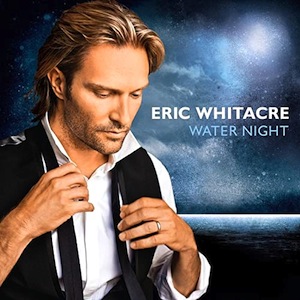
My “BFF” Eric Whitacre is a modern composer, and former child actor and male model, and at least at one point he supposedly had a hair-care-products endorsement deal… . His TED talk, where he tells how he went from rock-star wannabe to world-renowned classical composer (from 2011 to 2016, he was Composer in Residence at Sidney Sussex College, Cambridge University), reputedly was the first TED talk that received a standing ovation. Just try to keep your hankie in your pocket.
Whitacre’s When David Heard is tough sledding—the middle section is a “tone painting” of the voices in King David’s head as he melts down in grief. But I am quite certain that as long as there are great choruses made up of great singers, people will hear that piece. (I also think that the little bastard Absalom had it coming to him.)
* * *
Here are links to three articles I wrote for Stereophile magazine that got me into hot water with several readers, in that I admitted that in point of fact, Beethoven was not my favorite composer; and even worse, I rejected the notion that there could even be a “greatest” composer.
I think that these writings are important as an antidote to the uncritical acceptance of somebody else’s idea of what the contents of the Canon should be (knowing full well that that is probably what makes the business of classical music go ’round).
Just because they make little plaster busts of a composer doesn’t mean that you have to like him (has anybody ever made plaster busts of female composers?), and it does not mean that you might not end up liking the Japanese composer Takemitsu more than you actually like Beethoven.
I have spent decades pushing back against the implicit notion that the riches of our culture are only for the economically rich. An “appreciation” of classical music that, in reality, only reflects the fact that a smattering of purported knowledge can pass as a marker of higher social class, is, in my estimation, worse than no exposure at all. So, here goes:
“My music is better than your music!”
Excerpt:
Problems arise, however, when people take their own lists (or that of some authority; eg, a writer for the New York Times‘ list of “Top 10 Classical Composers”) as establishing an absolute ranking rather than a personal preference. Just what does it mean to say that Beethoven is the “greatest” composer, ever? (It probably means only that anyone who says such a thing didn’t get the memo that “Mahler is the new Beethoven.”) Without a rigorous definition of greatest, people might as well save a lot of time and effort by just getting drunk and yelling at each other.
Your Music vs My Music: This Time, It’s Personal!
Excerpt:
If you personally and subjectively choose to define “greatness as a composer” only by those attributes that Beethoven possessed in greater measure than anyone else, you may fool yourself into thinking that Beethoven is objectively The Greatest Composer. He isn’t. Ludwig is just The Greatest Beethoven, in the same way that J.S. is The Greatest Bach, and Toru is The Greatest Takemitsu.
And thank God for them all.
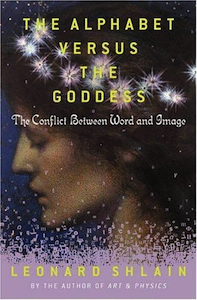
Review of: The Alphabet Versus the Goddess: The Conflict Between Word and Image
Excerpt:
Shlain believes that the very way people thought was transformed by the alphabet’s demands to break concepts down and express them reductively, linearly, and abstractly, rather than perceive them concretely and holistically through images. Shlain claims that the alphabet’s success caused the brain’s abstraction- and linear-oriented left hemisphere (which is also the seat of speech) to dominate the right hemisphere, which is oriented to intuition and images. He claims that the alphabet’s dominance led to what he calls the “inventions” of imageless gods, written codes of law, patriarchy, misogyny, and intolerance. (The opposites being gods that can be represented by images or sculptures, unwritten customs and traditions, gender equality or matriarchy, and tolerance.)
* * *
As I indicated above, all such lists should be prefaced with “IMHO,” “FWIW,” and “YMMV.”
But if I had to choose 12 American albums to introduce a Little Green Extraterrestrial Visitor to American musical culture, here we go:
1. George Gershwin: Rhapsody in Blue
2. The Beach Boys: Pet Sounds
3. Willie Nelson: Red-Headed Stranger
4. Miles Davis: Porgy and Bess
5. Christopher Parkening: Parkening Plays Bach
6. Jimi Hendrix Experience: Are You Experienced?
7. Duke Ellington: Never No Lament: The Blanton-Webster Band
8. Bruce Springsteen: Born to Run
9. Roy Harris: Symphony 3
10. Marvin Gaye: What’s Going On
11. Joni Mitchell: Court and Spark
12. Steely Dan: Aja
One of my favorite things to do when I was writing for Stereophile magazine was to ask readers to send in their own lists in hope of recognition or a free CD. I had a reader-write-in competition for Cultural Literacy in American Music, and the above list was my pump-priming example.
Here are two paragraphs that reveal my ambivalence, though (which thoughts are also very relevant to the educational process):
Third, once a work or creator is included in the canon of cultural literacy, he, she, or it risks being reduced to those elements (or element) likely to show up on the test, so to speak. This is probably the biggest problem. There are two kinds of students: those who are engaged by the subject matter, and those who are in it only to pass the course. “John Coltrane? Who? Oh, yeah! ‘Sheets of sound’! Next question!”
Multiple-choice testing only adds insult to injury. Reducing an unusually complex artist’s entire career to a three-word catchphrase does not enhance comprehension, it impedes it. But that is what happens when 800 years of Western music account for less than 20% of the class time in a Western Civ survey course.
I urge you to check out the lists my readers sent in; the winning entries are extraordinary.
* * *
Three other books I strongly recommend:
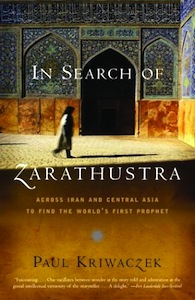
The Search for Zarathustra: Across Iran and Central Asia to Find the World’s First Prophet
The launching pad for this cultural-history and travel book is Richard Strauss’ orchestral blockbuster Also Sprach Zarathustra (Thus Spake Zarathustra), known to many only as Theme from “2001: A Space Odyssey.” Your humble scribe watched the original theatrical release at a “Cinerama” movie theater. He thought it lost the thread of its own story.
Which is something that cannot be said about this engrossing book. What fascinated me most is the author’s assertion that key Zoroastrian tenets, transmitted via the Babylonian Captivity, became important parts of post-Exilic (or, post Babylonian Captivity) Judaism.
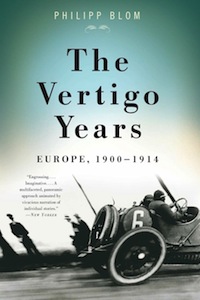
The Vertigo Years: Europe 1900 – 1914
From Amazon’s blurb:
From the tremendous hope for a new century embodied in the 1900 World’s Fair in Paris to the shattering assassination of a Habsburg archduke in Sarajevo in 1914, historian Philipp Blom chronicles this extraordinary epoch year by year. Prime Ministers and peasants, anarchists and actresses, scientists and psychopaths intermingle on the stage of a new century in this portrait of an opulent, unstable age on the brink of disaster.
Beautifully written and replete with deftly told anecdotes, The Vertigo Years brings the wonders, horrors, and fears of the early twentieth century vividly to life.
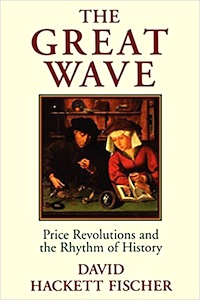
The Great Wave: Price Revolutions and the Rhythm of History
From Amazon’s blurb:
Records of prices are more abundant than any other quantifiable data, and span the entire range of history, from tables of medieval grain prices to the overabundance of modern statistics. Fischer studies this wealth of data, creating a narrative that encompasses all of Western culture. He describes four waves of price revolutions, each beginning in a period of equilibrium: the High Middle Ages, the Renaissance, the Enlightenment, and finally the Victorian Age. Each revolution is marked by continuing inflation, a widening gap between rich and poor, increasing instability, and finally a crisis at the crest of the wave that is characterized by demographic contraction, social and political upheaval, and economic collapse. The most violent of these climaxes was the catastrophic fourteenth century, in which war, famine, and the Black Death devastated the continent–the only time in Europe’s history that the population actually declined.
And if the relevance of Fischer’s book to music eludes you, please ponder this. In 1705, Johann Sebastian Bach, history recounts (and what does History know, anyway?), walked 250 miles to hear his older colleague Buxtehude play the organ. That journey was possible only because the Thirty Years’ War had burned itself out three generations previously (1648). And anyway, these recommendations are not slavishly music-oriented; they are to help anyone gain a greater understanding of how we got to where we are.
* * *
And to wrap it all up, three albums or works of music you really must hear:
(Note, you can probably find these on streaming services, or put up on YouTube.)
Joel Fredericksen and Ensemble Phoenix Munich: Requiem for a Pink Moon
CD Harmonia Mundi HMC 902111 (recorded 2012)
The idea of classical bass singer Joel Frederiksen and Ensemble Phoenix Munich’s putting together an early-instruments Elizabethan tribute album to Nick Drake might strike you as daft, as it did me. But, it works. It’s the real deal. There was a melancholic plaintiveness to Drake’s music that is not at all far from the Elizabethan temperament. Frederiksen of course sings both beautifully and un-selfconsciously. But what makes this recording one of the most affecting I have heard in years is that the interleaving of Elizabethan laments and parts of a Gregorian Chant Requiem Mass with Drake’s songs makes such a powerful connection to the universal human experiences of loss and grief, and not just to one particular artist or album. Buy one for yourself, and buy several to give as gifts.
Aaron Diehl: The Bespoke Man’s Narrative
CD Mack Avenue MCD 1066
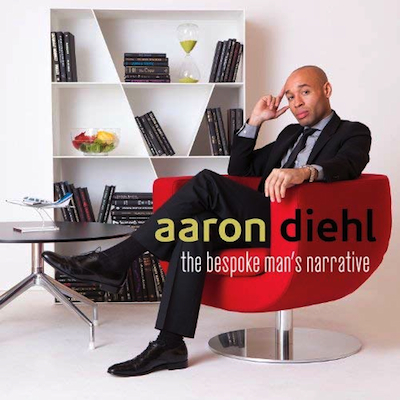
Talk about a fascinating personal history. Rising-star jazz pianist Aaron Diehl’s father ran a funeral home in Columbus, Ohio, with a largely African-American clientele. Diehl started at the piano with Bach, and not long after was playing in both the funeral home and a nearby Catholic church. I think the significance of those early experiences is not so much that a young teenager was already playing for audiences, but rather that he was playing in the context of rituals and, in the case of the funeral home, emotionally fraught major life transitions. I suspect that Diehl’s unusual backstory is a large contributing factor in his musical maturity and poised artistic approach.
By age 13, Diehl had joined a jazz youth orchestra; by 16, he was playing solo piano in a hotel lounge; at 17, he toured Europe as part of the Wynton Marsalis Septet; that fall, he started studying at the Juilliard School, with Oxana Yablonskaya. In April 2011, the American Pianists Association awarded him (at age 26) first prize in the Cole Porter Fellowship in Jazz competition. That career-development grant provided the means to produce Diehl’s first studio recording, The Bespoke Man’s Narrative (CD, Mack Avenue MCD 1066).
Here’s an excerpt that shows Diehl’s astonishing fluidity and speed as a pianist:
08 Ravel, Le Tombeau De Couperin (III. Forlane) excerpt
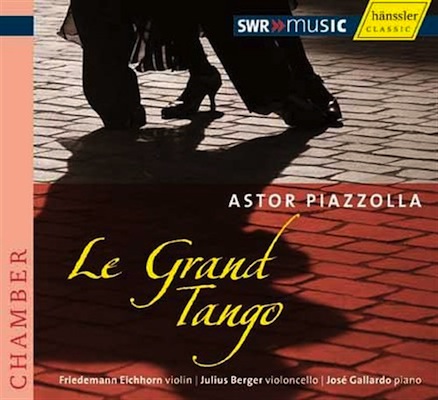
Le Grand Tango: Music of Astor Piazzolla
Recorded March 2005, SWR Funkhaus Mainz
CD SWR KLASSIK 93205
Download (CD Quality Only)
José Gallardo, piano; Friedemann Eichhorn, violin; Julius Berger, cello; José Bragato and Osvaldo Calo, arrangers; Peter Steiber and Sabine Fallerstein, producers; Angela Öztanil, engineer.
Astor Piazzolla (1921-1992) was best known as a performer of his own modernized tango music. His instrument was an unusual concertina (button accordion) called the Bandoneón. The Bandoneón was originally designed (in Germany) as an inexpensive substitute for a church organ, providing chordal accompaniment to congregational hymn singing. That intended use dictated the inner logic of its workings. So the Bandoneon plays different notes from the same fingering, depending whether the bellows was being pushed together or pulled apart. That quirk makes Piazzolla’s brilliant solo work even more impressive… .
But Piazzolla was more than an electrifying live performer; he was a serious composer. The Hungarian classical pianist Bela Wilda, who introduced Piazzolla to Bach, himself had been a student of Rachmaninoff’s. Piazzolla briefly was a student of Nadia Boulanger’s (she sent him on his way, though, urging him to find his own path). Piazzolla spent five years studying orchestration with Alberto Ginistera. Piazzolla put that training to use over the rest of his life, eventually writing more than 60 film scores. That sensibility is what makes this very well recorded, infectiously listenable album a “must-buy.” Just buy it!
This carefully-crafted recital’s center of gravity is an arrangement for piano, violin and cello of the piece “Oblivion,” from Piazzolla’s score for Marco Bellocchio’s 1984 film adaption of Pirandello’s tragicomedy Enrico IV, which is about a man who believes himself to be the Holy Roman Emperor Henry IV. Bellocchio’s film starred Marcello Mastroianni and Claudia Cardinale. “Oblivion” is a potent cocktail of yearning, loss, and grief, reminiscent of Ennio Morricone’s or Nino Rota’s finest work. Piazzolla’s writing has classical eloquence and elegance, showing mastery of counterpoint and voice-leading, and rhythmic subtlety.
Track 5 Enrico IV – “Oblivion” (excerpt)
# # #


